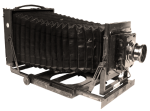Recovery and Restoration, How Is It Done?
For most of the 20th century everything was analog.
Photos were on pieces of film and photo paper, movies were of long strips of film, video and sound was recorded on long ribbons of brown spaghetti or cut onto cylinders and discs!
Almost always the recording in your hand was the one and only original and if you could make a copy it would likely not be quite as good as the original. Plus there was the problem of the medium itself, unless you paid for a better brand even your original recording may be in jeopardy. Well, that was the era of do the best you could with what you had and mostly it was sufficient. Except that now most of that original media is deteriorating further – and in some cases fast.
It has been said that most base materials used during the analog era are bent on getting back to their original raw state. Film, print paper, recording tape, colour dyes, glues and binders etc. will all eventually degrade. The decay rate for most materials used in the past is now known, even for some of the later supposedly safe materials. About the only solution to this problem is very cold and mid humidity storage. Even this will only slow the problem down while more permanent solutions are found.
The only realistic solution to this problem is to recover the original recordings to a digital medium.
In principle this is a very good solution except for two basic difficulties.
- This should be obvious, but it has to be said – that the only way to make a transfer from any analog medium to digital, is to first have good original analog equipment which works! Otherwise, not much chance. Good working equipment is harder to come by and the skills and spare parts to keep them going are fading also. Though it has to be said that this can be a much easier than with some replacement digital equipment.
- Although the digital realm is inherently stable and reliable as a medium and any recordings made in this manner essentially will not degrade and may be copied without quality loss – it is still extremely advisable to make sure you make backup and archival copies of any digital material simply because hard drives do fail, USB sticks get lost and CDs and DVDs can be damaged. (A caveat here – it can be shown that a digital recording may not be a perfect reproduction or a copy may not be a perfect copy , but this is really not a big problem and a bit like digital cheese compared to analog chalk.)
Similarly, the process of recovery comes in two parts.
First, with the aid of properly maintained film, video, photographic and sound recording equipment a decent transfer copy may be obtained. There are some more modern aids which are used here such as high quality scanners to recover photographic images and video signal stabilisation devices included in the signal path between a playback machine and digital recording. Plus a number of other old tricks which would have been quite familiar to professionals and enthusiasts in the past. The result is a digital recording in the computer as close as possible to the original.
Next we go to work on the computer recording. The interesting thing here is that while analog recordings have become increasingly harder to recover, the technology to restore them has improved considerably.
Apart from the ability to edit a film and video recording plus still images and sound in a computer, there are many tools available to restore image and sound in almost magical ways. I cannot say every recording can be perfectly restored, but most can be improved to some degree and many can be vastly improved. In some cases it is possible to restore a recording to better than the original and thus be able to gain a better idea of what the original performance would have been like.
Of course there is much more to it all than this. For one, a great deal of experience helps. Especially when an old recorder breaks down and parts or manuals and circuits are just not available. But for old tinkering techies like me this is fun and a passion. I love playing around with this sort of old technology, much more user friendly than digital. Although I am very appreciative of what can now be achieved in the digital realm. Once upon a time we used to dream!


